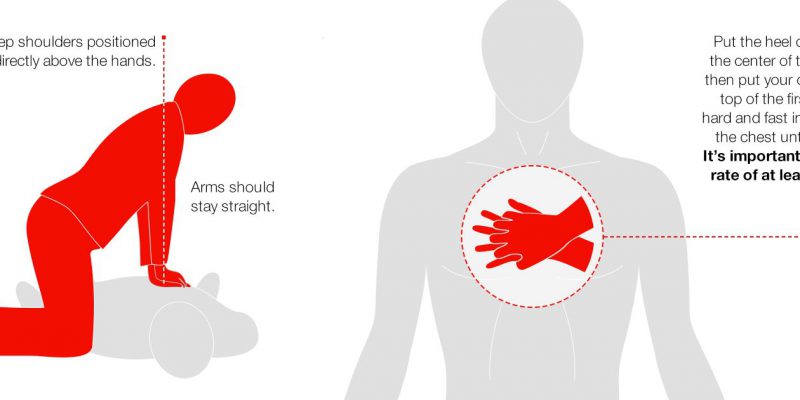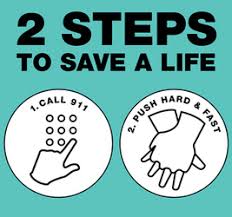

Hands-Only CPR
Each year, more than 350,000 out-of-hospital Sudden Cardiac Arrests (SCAs) occur in the United States, 80% in the home. An SCA is different from a heart attack. This particular kind of cardiac arrest stops the heart due to an electrical problem. The person loses consciousness and has no pulse. This differs from a heart attack which is caused by a block in the blood supply to the heart muscle.
According to the American Heart Association, about 90% of people who suffer SCA’s die – a pretty sobering statistic. But we each have the power to significantly improve this statistic. Especially if performed immediately, CPR can double or triple a cardiac arrest victim’s chance of survival. That’s an astounding statistic. And it means that any of us could be responsible for saving the life of a loved one.
But how? It’s called HANDS-ONLY-CPR. Forget the old images of mouth to mouth resuscitation.
This latest lifesaving technique has two easy steps: (1) Call 9-1-1 and then (2) push hard and fast in the center of the chest to the beat of a familiar song that has 100 to 120 beats per minute. Remember “Stayin” Alive by the Bee Gees? Or “Walk the Line” by Johnny Cash? The beat of these and many other songs corresponds to the 100-120 chest compressions per minute that buy time, pushing oxygen-rich blood through the body to keep vital organs viable until the ambulance arrives.
Anyone can learn to do this. There is no risk for the person performing HANDS-ONLY-CPR. There is no “wrong” way to do it and the bystander or family member is legally protected by the Good Samaritan Act. The upside is that you can’t hurt the victim and you can, in fact, save a life.
To watch a 90 second demo video to learn how to perform HANDS-ONLY-CPR, visit heart.org/handsonlycpr. You can find a CPR class near you at www.heart.org/findacourse or contact your local American Heart Association.
Bystanders and family members are vital links in the chain of survival of SCA victims. They truly have the power to give the gift of life.
